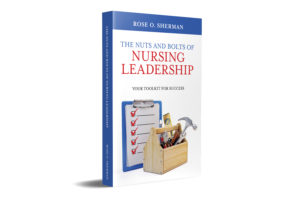By Rose O. Sherman, EdD, RN, NEA-BC, FAAN
One of the challenges for nurse leaders in looking at what is happening with the workforce is access to good current data. There is so little out there right now. That is why the recent 2020 National Nursing Workforce study published in the April 2021 issue of the Journal of Nursing Regulation is critical information for leaders. This is the most up-to-date comprehensive nursing workforce data that is available. Through a joint partnership, the National Council of State Boards of Nursing and the National Forum of State Nursing Workforce Centers used a randomized sample survey of 157,459 licensed RNs and 172,045 LPNS and LVNs collecting demographic and work data from February 2020 to June 2020.
The data in the study helps to explain some of the current trends that we are seeing across the United States, which include the following:
- A significant number of RN retirements.
- Nurses cutting back hours worked.
- Lack of experienced staff in virtually every specialty area.
- Nurses seeking employment outside of acute care.
- New graduates returning to school in large numbers to pursue advanced practice positions.
- Fewer nurses seeking positions in acute care.
This national nursing workforce study illustrates how the COVID pandemic has accelerated trends in the data that might have taken years, not months, to be fully realized. Some interesting data points and their implications are outlined below:
- As of 2020, there were 4.1 million licensed RNs in the US.
- Of the 4.1 million – 84.1% were actively working in nursing (a very high labor participation rate) – BUT only 64% of these nurses were working full-time in 2020.
- 13.7% of RNs reported having regular second jobs so if an RN either retires or reduces their hours – 13.7% of nursing jobs in the United States suffer a secondary impact.
- 54% of actively working RNs work in hospitals, and this number has dropped over time as the number of ambulatory jobs continues to grow.
- 65.2% of the RN workforce have a BSN or higher degree, which opens up far more career opportunities than RNs had when the workforce was predominantly ADN or Diploma nurses.
- The median age of an RN in the US is 52 years – meaning that 50% of the workforce are over 52 and 50% are younger. Healthcare workers over the age of 55 were at high risk during the pandemic, and many elected to take early retirement or leave acute care.
- 19% of the current RN workforce is over 65 (this number is shockingly high and has also grown year over year).
- 20% of RNs surveyed in 2020 indicated they would retire within 5 years. Many of these nurses accelerated their plans in 2021 as the number of Americans retiring has skyrocketed, causing acute labor shortages in many sectors. Fortune magazine reported in their May 18th, 2021 issue the following: “After a year defined by the global public health crisis of COVID-19, America’s nursing workforce is in dire straits. Some experts estimate that last year marked the largest retirement of nurses ever recorded in the U.S., and forecasts predict an additional 500,000 nursing retirements by 2022, which will leave the country with a nursing shortage totaling an estimated 1.1 million.”
Individually these data points may not look significant, but when you examine all the data in this report, the workforce turmoil and staffing shortages begin to make sense. We clearly don’t have the oversupply of nurses reported by some US labor economists and HHS in 2019 (widely covered by the healthcare press and still used in executive suites as a data point). In fact, nursing jobs will be one of the highest growth areas in the economy over the next 10 years. The Russian revolutionary Lenin once noted, “there are decades when nothing happens, and there are weeks when decades happen.” Sometimes all you need is a perfect storm and I would contend that this is what we have seen with COVID.
Read to Lead
Smiley, RA, Ruttinger C, Oliveria CM, Hudson LR, Allgeyer R, Reneau KA, Silvestra JH & Alexander M. (2021). The 2020 national nursing workforce survey. Journal of Nursing Regulation. 12(1). Journal Supplement. Available for download at https://www.journalofnursingregulation.com/article/S2155-8256(21)00027-2/fulltext
© emergingrnleader.com 2021
BRAND NEW WEBINAR Flyer Become the Boss No One Wants to Leave Nurse Retention in Turbulent Times
Give your leadership team the gift of a highly rated webinar – Nursing Leadership in 2021: Rebooting after a Life-Quake A Nursing Leadership Reboot Workshop.
Read the Nurse Leader Coach – Available at Amazon and Other Book Sellers.
Now Available to Strengthen Your Leadership in 2021 – The Nuts and Bolts of Nursing Leadership: Your Toolkit for Success




 LinkedIn
LinkedIn Instagram
Instagram